
First and Only Weekly Online Fanzine Devoted to the Life and Works of Edgar Rice Burroughs Since 1996 ~ Over 10,000 Webpages and Webzines in Archive |

First and Only Weekly Online Fanzine Devoted to the Life and Works of Edgar Rice Burroughs Since 1996 ~ Over 10,000 Webpages and Webzines in Archive |
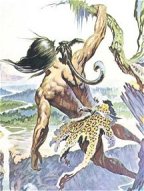
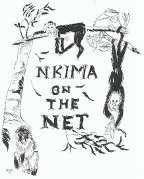
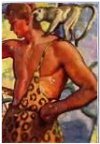
![]()
C H A T T E R I N G #5
___________________________
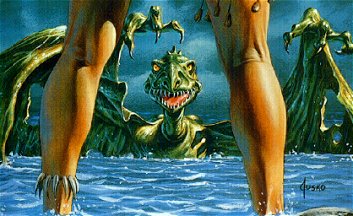
Seeing the Mahar
By Nkima
I. I dream the dream of the Mahar,
The deep dweller of Pellucidar.She appears to me in dark dragon caverns;
I cannot speak as she unfolds her wings.
Old Burroughs knew enough to place her there,
Swimming beneath the hollow springs
To enlighten us of the hidden lair.I go down to listen to the silence of the Mahars.
She fans the air with the nothing that is there.Our shadows lay against the rock
In the core of Pellucidar.
There is no use for tears
Where the tomb is familiar.Human companions stand close together
Fingering stone-age spears, castaways
Gazing at the Mahar
As she swallows up their gaze.In the darkness of the dream dwells the Mahar.
She is the damp reptilian brain
That snaps up the maiden
To sip her terror without pain.We are in the dream of the Mahar.
She sends our shadows across the rock,
Bidding a presence we cannot mock.Beyond the cave, light eternal fares,
Yet we are drawn down to all the Mahar owns,
(Puny heroic warrior drones)
Stick-men captured by old dragon schemes
That sleep within the night of our nightmares
And dream our deepest dreams.
Old Burroughs knew enough to look into the face
of the Mahar;
He sees her waving wings at the core.
While we are yet blind and dumb,
He leads us through a secret door.Burroughs knew enough to shove the Mahar
Into the edges of the kingdom,
Yet he knew another wisdom;
The Mahar is always there.There is no doubt that the Earth is hollow
And filled with every ancient thing.
We close our eyes and see but threads,
A darkened cave, a central sun,
But to find the Mahar
We have to circumnavigate our heads
And redistribute the bones of our skeleton.
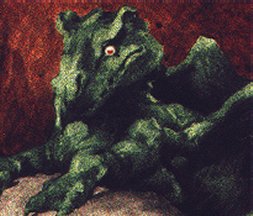
II.The more that I look into the writing of Burroughs, the more I realize he is the great American author of the hidden human story. Only true folktales or fairy tales carry such a fine current of power.
It is quite futile to compare the writings of Burroughs with other authors for they are creators of literature and art (a noble, worthwhile effort) but Burroughs dug into the depths of the human psyche and found the Mother Lode. I think Jack London knew where this core could be found because he brought back a lot of nuggets as well. The real trick is to go down there and draw up the precious metal and not get eaten by the Mahar.
Part of the trick is knowing how to cover your tracks, and Burroughs could do this like an Apache. We can connect certain events in his life with certain things in his stories, but they just don't work out that way the way they do with other writers.
Burroughs took the plunge into the core of things -- in fact into the core of every-thing -- and he let that mysterious "It" lead him through his tales. He had to write fast to do this because if you slow down you start getting "crafty" and start writing literature the way I did in the poem above.
Burroughs was a very visual writer. He saw it and wrote it down. (Only a visual writer can dictate his stories, which he occasionally did.) Writers of literature need to write it down to see "words." Burroughs saw the story unfold, and thus in his telling it unfolds for us.
Burroughs saw the Mahar
And was not turned to stone.This was one of his finest accomplishments as an underground seeker.
III.
Burroughs was very good when writing about animals, both real and make-believe. His monsters had real power, which of course elevated his heroes when they finally overcame them. This is one reason, I believe, why so many artists have been attracted to his work. He is one writer where a careful reading of his stories pays off in the final illustrations made for them.
The most horrendous Mahars were accomplished by the great Frank Frazetta. These are real nightmarish monsters that look capable of dismembering plump little mammals.
In comparison, St. John's Mahars are whimsical, the way most of his animals were drawn.
David Day remarks in his "Burroughs Bestiary" that "this master story-teller is at his best when creating and populating his imaginary worlds." Eric Howley's pen and ink drawings for this book reveal some spectacular terrors, but his Mahar is a disappointment to me. Related Burroughsian winged monsters include the Jo-oos and the Wieroos of Caspak. (George McWhorter lists "Weiroo" in his"Burroughs Dictionary, " which is also Day's spelling. The creature is cataloged as "Wieroo" in Clark A. Brady's "Burroughs Cyclopaedia," which is also the Ace paperback edition of "Out of Time's Abyss" preferred spelling.) Of course, Pellucidar also included Thipdars which acted as bodyguards and hunting falcons for the Mahars.
One might also mention the Angan, the Bird Men of Amtor, who also had bird brains. If you are looking for an excellent read, I would recommend Rebecca Ore's "Becoming Alien" for an account of what it might be like to be a bird with high intelligence. She fulfills John W. Campbell's classic challenge to SF writers, "write me a character that thinks as well as a human, but not like a human." I have a great project for Huck or for anyone else with a bent for taxonomy and a lot of time on their hands. (I mention Huck because he has a great start on the beasts of Barsoom). What we need is a classification chart of all the creatures invented by ERB. Day's "Bestiary" suggests that many of these creatures are related even though they come from the various series. If you have both Brady's and McWhorter's books you could start a system of classification and come up with a new book of your own. I would imagine that this study would reveal many new things about ERB's methods and psychology. Once you are finished you might ask my brother, Duane, to illustrate a large chart with all of the beasts (or many small charts, according to species). I would like to see Duane and Huck collaborating on this Monster Project someday. They are both meticulous scholars and the pipe smoker along the Huck's cigars could fill the room with a grand evocation of fact and fantasy. I would be happy to write the introduction. The End

Origin of the name "Mahar"The mahars are the dominant race of Pellucidar, a highly evolved race of winged replies who live in vast underground cities. They are all female and eat human flesh. they were eventually driven out of the Empire of Pellucidar by the forces of David Innes but fled outside the boundaries of the empire and decided to live in peace with the humans, whom they had finally realized were intelligent.
The Mahars of India
They were a caste of Untouchables that were employed in the ranks of the British Army to great success.
"Mahars had no special skill or craft, but performed necessary duties for the village as watchmen, wall-menders, street-sweepers, removers of cattle carcasses, caretakers of the burning ground, servants of any passing governmental official.... Mahar service was essential for the village; his status was low, his work menial, but his place was secure. With the coming of the British and the spread of new ways of administration and communication, the Mahar place in the village grew less important. Military service provided Mahars with the opportunity to move beyond their traditional social position in the village. In fact, the Mahar tradition of being in armies precedes the British Raj."Mahars of America
Quote from The Mahar Movement's Military Component, a website by Richard B. WhiteThe Journals of Lewis & Clark give the name Mahar to the Omahas (Indian tribe). Clark wrote on Saturday 11 August 1804:
"After the rain was over, Capt. Lewis, myself & 10 men assended the Hill on the L.S. (under which there was some fine Springs) to the top of a high point where the Mahar's King, Black Bird, was burried 4 years ago." (He died of smallpox).It seems that the Mahars are a most unfortune people indeed wherever they are found. It seems possible that ERB took the name for either or from both sources -- or perhaps he just made the name up out of the blue."The Mahars haveing no houses, no Corn or anything more than the graves of their ansesters to attach them to the old Village, continue in purseute of the Buffalow longer than others who has greaters attachments to their native village. The ravages of the Small Pox (which swept off 400 men & Womin & children in perpopotion) has reduced this nation not exceeding 300 men and left them to the insults of their weaker neighbours, which before was glad to be on friendly terms with them. I am told when this fatal malady was among them they carried their franzey to verry extroadinary length, not only of burning their Village, but they put their wines & children to Death with a view of their all going together to some better Countrey. They burrey their Dead on the top of high hills and rais Mounds on the top of them. The cause of way those people took the Small Pox is uncertain, the most probable, from some other nation by means of a war-party." (Folio Society edition, which keeps the interesting spelling of the explorers.)
Mahar also seems to be a Celtic family name, but the Indian, East and West, seems the more likely source if one is to be found.
Is there a list (in one place) of all of ERB's characters? I know we have Brady and McWhorter's books, but a single list might be instructive, and someone might like to research the origins of all of the names. ERB was fond of using the names of the American Presidents for his characters. How many were used? He also used the names of famous American heroes, inventors, industrialists, explorers, etc. Someone could make a list of these with appropriate comments. This seems like a large research project for someone who is looking for an ERB topic. (I can think them up but I doubt that I will live long enough to do them all.)
Someone did a nice little piece on the Polish-sounding names, Kerchak, Terkoz, etc. referring to ERB's upbringing in Chicago. Who did this work and where can I find it again? How many historical figures were mentioned in the canon and in which books?
I wonder if Clark A. Brady will think about writing a philological essay, now that his ground work is so admirably finished, discussing the etymology of ERB's character and place names? Is there a linguist out there who loves ERB? It seems to me that ERB used many sources for his rich abundance of names including Greek, Latin, American Indian, African, Russian, the Far East, etc. He was a master of word-play who was quite astounding in his scope, as a few minutes of paging through Brady will attest.

For Spectacular Japanese Pellucidar Art
Visit
ERBzine 0323:
Lord Greystoke's Asian Gallery ~ Part II - Pellucidar
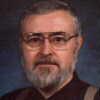
David Adams
Nkima and his friend, David Adams, would like to hear from ERB fans
davidadams@willmar.com
|
Read 'em all at: ERBzine 0396 |
 |
 |
 |
 |
 |
 |